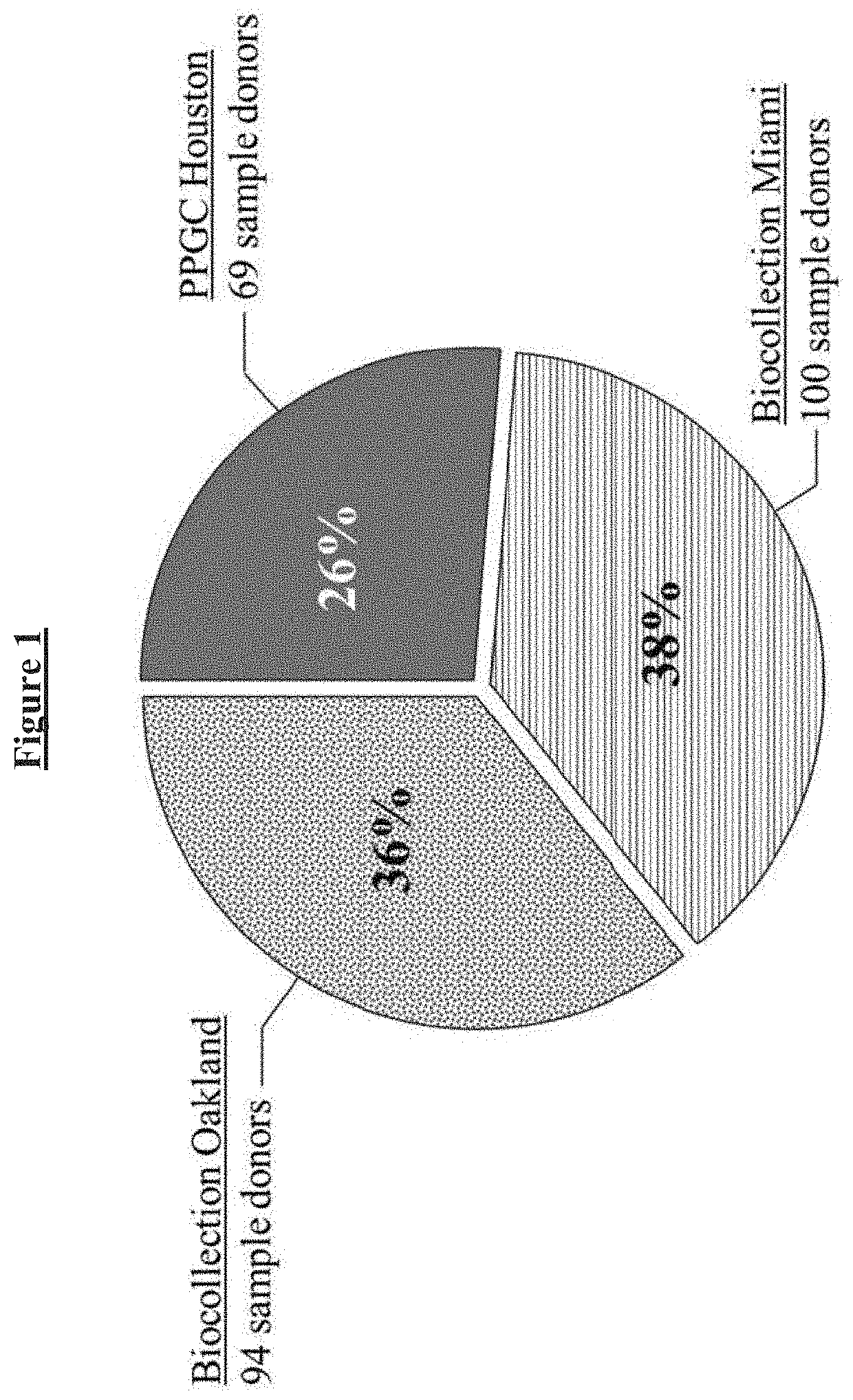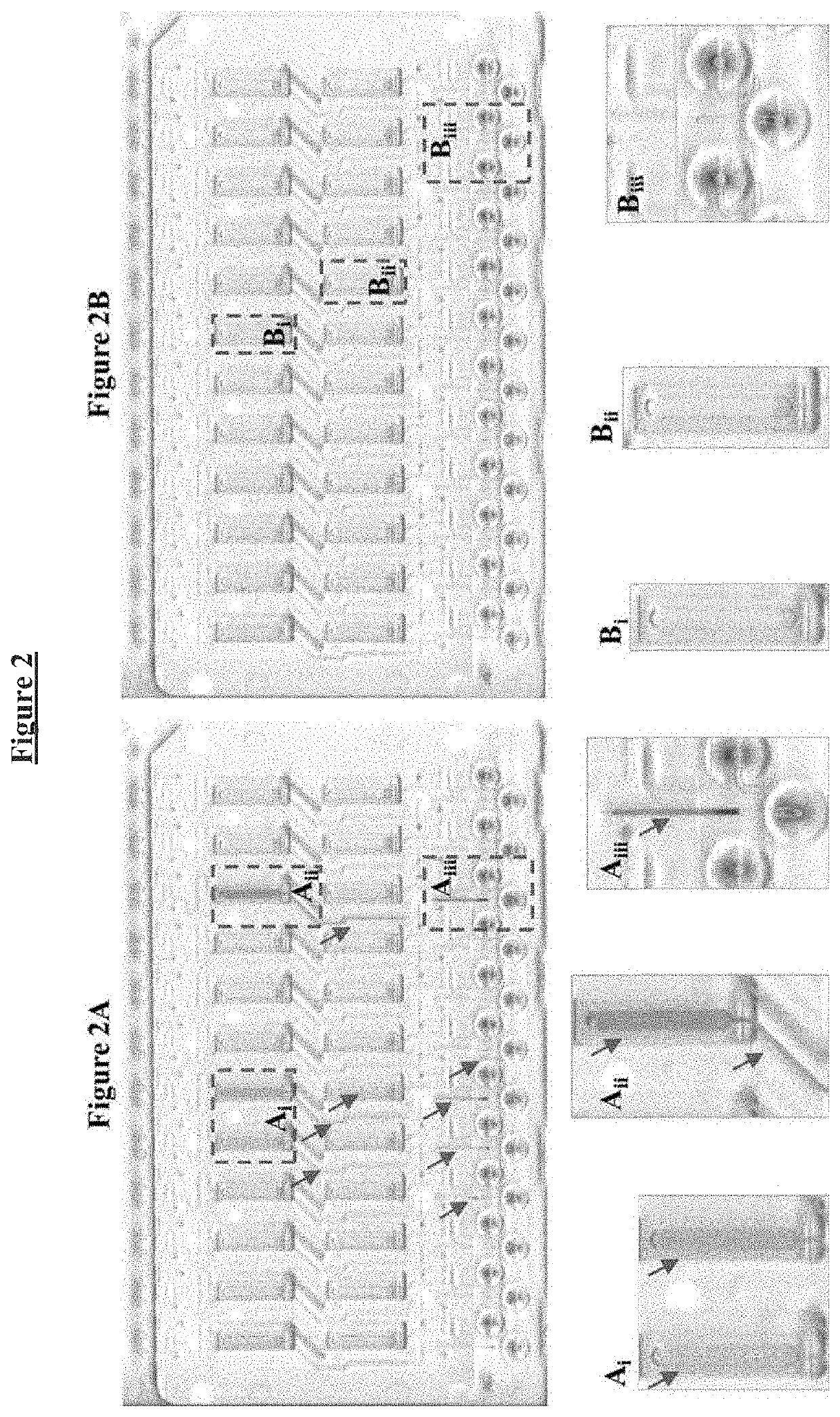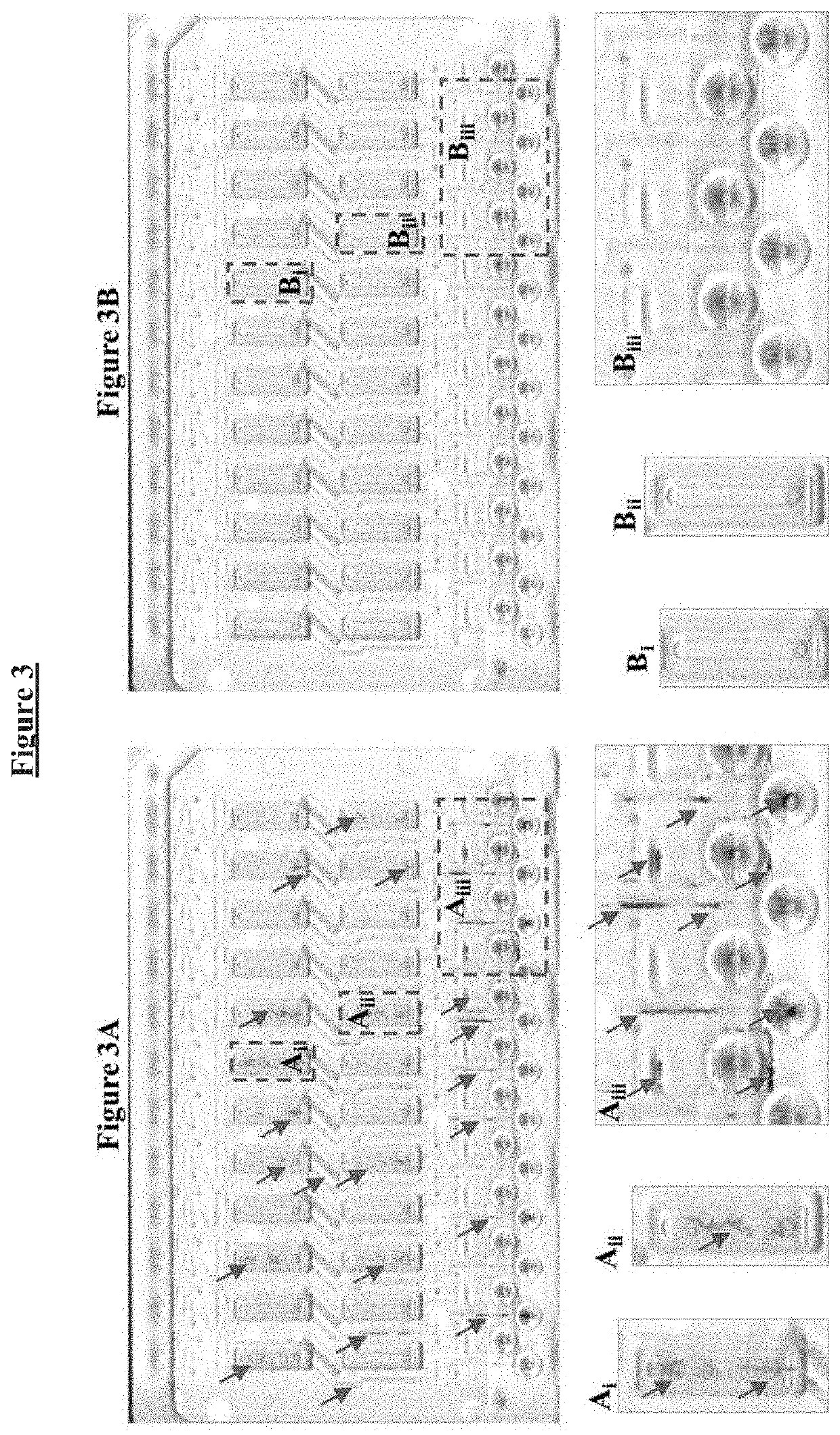Buffer compositions for reducing aggregation
a buffer composition and buffer technology, applied in the field of buffer compositions and assay kits, can solve the problems of trichomoniasis (tv), large and increasing public health burden, and increased risk of sti transmission or infection (including hiv) in males and females
- Summary
- Abstract
- Description
- Claims
- Application Information
AI Technical Summary
Benefits of technology
Problems solved by technology
Method used
Image
Examples
example 1
Diagnostic Assays Performed on Vaginal Samples
[0053]The studies described herein this section illustrate the robust performance of diagnostic assays achieved by use of the buffer compositions disclosed herein this application for detecting vaginal disorders, for example, vulvovaginal candidiasis (VVC), trichomoniasis and bacterial vaginosis (BV), in clinical vaginal-swab samples that can contain interfering substances. For example, the assays implemented fully automated in vitro diagnostic tests on the BD MAX™ system for qualitative detection of Candida spp. (e.g., C. glabrata and C. krusei), T. vaginalis and / or BV-related bacteria. The assays incorporated microfluidic-based sample processing and nucleic acid-based detection methods. More specifically, the diagnostic assays utilized fluidically-operated magnetic particles for nucleic acid extraction, real-time polymerase chain reaction (PCR) for amplification of target DNAs, and fluorogenic hybridization probes for identification of...
example 2
Test Repeatability
[0058]Table 2 summarizes the agreement rates between the assay results obtained in two tests (“first take” and “second take”) of the same sample (“same swab”). The Comparative Buffer was used in the assays of Table 2(a), and the Example Buffer I in those of Table 2(b). Listed in each of Tables 2(a)-2(b) are the agreement rates of the positive results, the negative results, and overall (from left to right) for Candida spp., C. glabrata, C. krusei, T. vaginalis, and BV (from top to bottom).
Table 2. Baseline Repeatability of the Diagnostic Assays
[0059]
2(a). Agreement Rates (%)PathogenicPositiveNegativeMarkersResultsResultsOverallCandida spp.93.997.396.5C. glabrata91.7100.099.6C. krusei100.0100.0100.0T. vaginalis97.1100.099.6BV97.698.297.9
2(b). Agreement Rates (%)PathogenicPositiveNegativeMarkersResultsResultsOverallCandida spp.93.697.997.0C. glabrata90.099.699.2C. krusei100.0100.0100.0T. vaginalis97.199.599.2BV99.298.298.8
[0060]Both the Comparative Buffer and the Exam...
example 3
Test Reproducibility
[0062]Table 3 summarizes the agreement rates between the assay results obtained, respectively, in a test (“first take”) of one of the two samples (“swab 1” and “swab 2”) collected from the same subject (or sample donor). The Comparative Buffer was used in the assays of Table 3(a), and the Example Buffer I in those of Table 3(b). Listed in each of Tables 3(a)-3(b) are the agreement rates of the positive results, the negative results, and overall (from left to right) for Candida spp., C. glabrata, C. krusei, T. vaginalis, and BV (from top to bottom).
[0063]Both the Comparative Buffer and the Example Buffer I achieved at least 90.0% agreement between between two different samples (“swab 1” and “swab 2”) obtained from the same subject, when various pathogenic markers were tested.
Table 3. Baseline Reproducibility of the PCR Assay for Pathogen Detections
[0064]
3(b). Agreement Rates (%)PathogenicPositiveNegativeMarkersResultsResultsOverallCandida spp.97.997.997.9C. glabra...
PUM
| Property | Measurement | Unit |
|---|---|---|
| Fraction | aaaaa | aaaaa |
| Fraction | aaaaa | aaaaa |
| Fraction | aaaaa | aaaaa |
Abstract
Description
Claims
Application Information
 Login to View More
Login to View More - R&D
- Intellectual Property
- Life Sciences
- Materials
- Tech Scout
- Unparalleled Data Quality
- Higher Quality Content
- 60% Fewer Hallucinations
Browse by: Latest US Patents, China's latest patents, Technical Efficacy Thesaurus, Application Domain, Technology Topic, Popular Technical Reports.
© 2025 PatSnap. All rights reserved.Legal|Privacy policy|Modern Slavery Act Transparency Statement|Sitemap|About US| Contact US: help@patsnap.com



